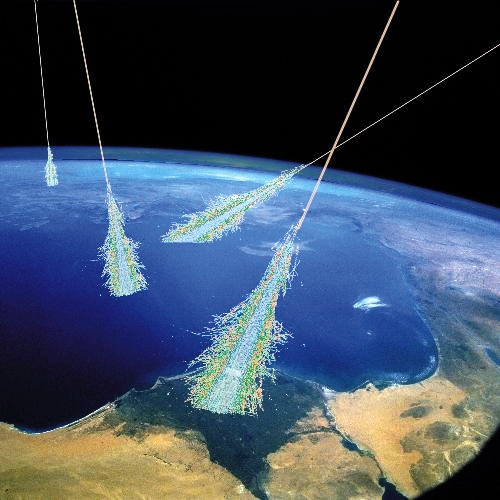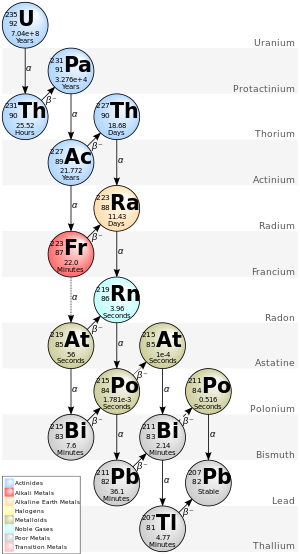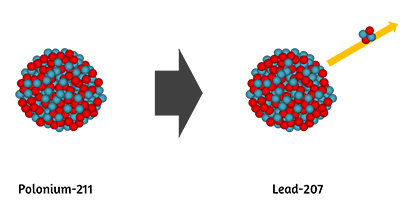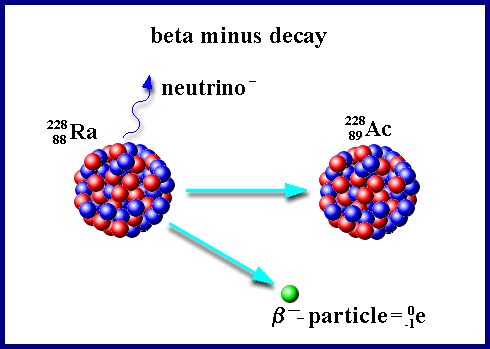Just few days ago I finished writing a preliminary version of a chapter for my book on Quantum Fractals. The title of this particular chapter is "Stochastic nature of quantum measurement processes." "Stochastic" is just a different name for "random", and "random" is just a different word for "we do not understand why things happen and we can't predict the outcomes, though we seem to be able to predict averages". There are many things around us that may be considered as "random", not only lottery numbers. But are they really random? This is the subject of the chapter that I wrote, where I had in mind "quantum events" that are often considered as "truly random" - no one can predict, for instance when a given radioactive atom is going to split into parts. Or so we think. But is that really so?
I do not have an answer to this question, but I wrote more or less what I know about various aspects of the problem. So, I wrote my chapter and sent it for comments to one of the top experts in nuclear decay research, prof. A. G. Parkhomov from Moscow Lomonosov University (see my previous post for more details on this subject). At the same time, since I was also discussing some mathematical issues in the same chapter, I asked another colleague, mathematician and statistician J.S., in the USA, for his critical comments. In response, I received an encouraging message from Moscow and a discouraging message from the US.
Well, I am joking a little bit. Prof. Parkhomov pointed me to a 2004 paper by Falkenberg - and I will tell more about this case below. My mathematician friend pointed out several errors with my English and also several inappropriate mathematical terms that I was using. He also noticed that, at one point, when I was writing the word "cosmic", I wrote, in fact "comic". He laughed about it because he himself is very skeptical about any possibility of cosmic influences. He thinks I am not just naive with my openness - I am even "dangerous". I thought that the game of co(s)mic influences is trying to tell us something, so I included it into the title of this article.
Now, the above was just introduction. What about the real content? Isn't it time to become serious? Indeed, it is and I am going to discuss very serious matters. Nuclear decay is a serious subject and it can have serious consequences. Let us have a look at this particular picture taken from Wikipedia:
At the top left we have Uranium 235. A nucleus of this particular isotope once in a while decides, for some reason, to end its life thereby creating Thorium 231 and emitting an alpha particle. It takes about 704 million years for half of a given sample of uranium to decay through this process. But that is not all. If you follow the chain of reactions, you will see that at some point, short-lived but deadly Polonium 211 comes into being. The chain ends with stable Lead 207. In the meantime there are alpha decays and there are beta (specifically: beta minus) decays.
What are these alpha and beta decays?
Alpha decay happens when a nucleus is emitting two protons and two neutrons bound into a Helium atom represented graphically:
Beta (-minus) decay happens when a nucleus is emitting a (negatively charged) electron and a somewhat mysterious neutrino. While electrons are easy to see and to detect, neutrinos are much "darker". They may belong to the dark part of our Universe. Anyway it is easy to draw them, so here we have a beta minus decay picture:
When discussing co(s)mic influences on nuclear decay rates, it is usually the beta decays that are (or are not) influenced by "something". Alpha decay rates are more resistant to the cosmic and psychic powers.
When did it all start? All this "pseudo-science" of yesterday, which today has become leading edge science, and which will be taught in the Kindergarten tomorrow?
As I mentioned above, A. G. Parkhomov pointed to me the paper by Falkenberg from the year 2001. It can be downloaded from internet:
Apeiron, Vol. 8, No. 2, April 2001 32
© 2001 C. Roy Keys Inc.
Radioactive Decay Caused by Neutrinos?
Eckhard Dieter Falkenberg
Uhldingen, Germany
Notice that it was published in a "strange" journal, probably because every mainstream journal at that time would certainly reject such a heretical claim. We learn from a discussion on Belief.net just four years ago:
Apeiron is a fringe journal. I am unable to determine who Eckhard Dieter Falkenberg is or what his credentials might be.Well, it so happens that I have a friend, a mathematician, who "looked into it further" and published, a year later, in the same fringe journal his critical analysis of Falkenberg's heretical claims. My mathematical friend, Gerhard W. Bruhn (I even co-authored one paper with him) came to the conclusion that it is nonsense, the methodology is wrong, and there is nothing that would show that any cosmic factor can influence nuclear decay rates.
.....
Then that settles it. There's no reason to look into it further.
Well, then that settles it. Or does it?
A. G. Parkhomov kindly sent me today a copy of his lecture in February 2013 given at the Institute of Nuclear Research of the Russian Academy of Sciences. He has concluded his lecture with:
The observed effects are important because they show the fundamental possibility of influencing the radioactivity. And if we will learn how to control the rate of radioactive decays within a sufficiently wide range, it will be possible to create a completely new nuclear energetics, without nuclear waste and biologically safe. (my translation from Russian)Apparently professor Parkhomov has not been burned at the stake.
What was a heresy yesterday, is not a heresy today, at least somewhere in the world.
So, what is it all about? We are - perhaps - living in times of a revolution; or, at least, pre-revolution. Nuclear alchemy slowly becomes the "real thing". Perhaps we will not have to wait until all the defenders of the old world order die.
In 2012 the following article found its place to the physics preprints repository at arxiv.org:
Is Radioactive Decay Really Exponential?It ends with:
Philip J. Aston
Department of Mathematics, University of Surrey
Guildford, Surrey GU2 7XH, UK
April 27, 2012
The question we are addressing of whether radioactive decay is exponential over long time periods is certainly of much theoretical interest. However, the stakes are high in more practical realms, since many dating methods over long time periods rely on the assumption of exponential decay of a slowly decaying isotope [4]. If the decay of 14C is indeed non-exponential, then no other slowly decaying isotope can be assumed to decay exponentially either, which would remove a foundation stone of modern dating methods. If confirmed, this will require a radical reappraisal both of our approach to radioisotope dating methods and of the many currently accepted dates which have been obtained using these methods.Let me repeat it:
... which would remove a foundation stone of modern dating methods. If confirmed, this will require a radical reappraisal both of our approach to radioisotope dating methods and of the many currently accepted dates which have been obtained using these methods.Isn't that rather startling co(s)mic news?
Stay tuned for more.







and full of fascinating things to ponder.... I have always been of the opinion that there is a solution awaiting our awareness whereby any negative impacts of our kindergarten playing with nuclear force, will be shown to be able to be harnessed and neutralized. However it may only be triggered when enough of us have developed a consciousness beyond the present crude state those creating and developing nuclear find themselves in.
Solutions await an awakened mind and tempered ego, methinks!